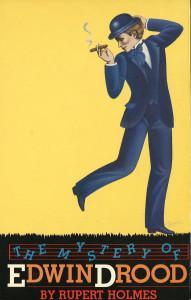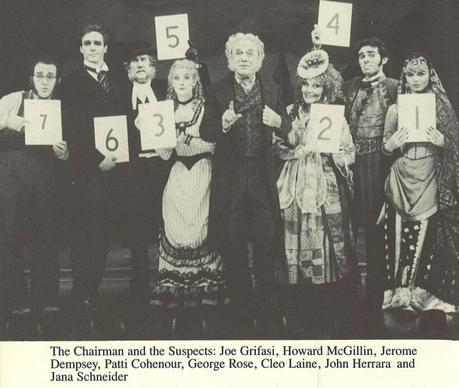 One subtle change, one added clue can change everything.
One subtle change, one added clue can change everything.
When Charles Dickens died in June 1870, he left an enduring mystery in his unfinished novel, The Mystery of Edwin Drood. Even after a careful reading, several questions are left unanswered.
Is Edwin Drood alive or dead?
Who killed (or assaulted) Drood?
Who is the mysterious detective Dick Datchery?
Why does haggard woman known as the Princess Puffer hate Jasper?
Jasper is clearly painted as the villain of the piece. This seems rather undeniable though there are passages presenting his inner conflict that are suggestive of a Jekyll and Hyde split-personality. But there is little to indicate that anyone other than Jasper as being responsible for Drood’s disappearance.
Most leading theories surmise that Drood is dead and that Jasper killed him. The body was disposed of in the Cathedral crypts where Jasper used quicklime, which he’d encountered on his nightly visit with Durdles, to hamper identification. Drood’s watch and tiepin where taken and thrown into the Cloisterham River either to dispose of them or to frame Neville Landless. Unknown to the murderer was the fact that Drood carried a ring belonging to Rosa Bud’s parents. Presumably this would have been the device by which the body would have been identified as Drood’s.
Datchery is often considered to be either Tartar or Bazzard, Mr. Grewgious’ clerk. I’d venture to say Bazzard as the more likely of the two. Grewgious clearly displays suspicions of Jasper and would be likely to employ Bazzard to discovering the truth. Whereas Tartar’s late appearance and connection to the characters presents little in the way of motive for him to take on such a role.
As for the Princess Puffer, who she might be and what role she’s to play, that is certainly a mystery. Her appearances are too few and too little is known about her to conjecture.
So what do I mean by one subtle change, one added clue?
My first exposure to this story comes from the musical version created by Rupert Holmes and staged on Broadway for the first time in 1985. I saw the show when it came through Syracuse on tour in October 1988.
The musical opens up a whole avenue of possibilities with its choose-your-own ending. What makes this possible is that one significant, added clue.
On the night of his disappearance, Edwin Drood leaves his Uncle Jasper’s residence wearing Jasper’s coat. Only two people are aware of this fact. Jasper and Neville.
When Bazzard, given a much larger role in the musical, discovers an important clue, Jasper exclaims, “Why, it’s my coat, the one I gave to Edwin last night! It’s been torn to ribbons … and, blood, oh God, there’s his blood on it! Where did you find this?”*
Why is the coat significant? In both book and play, Jasper and Neville are given motive for killing Drood. However, several characters have a reason to wish Jasper dead, and any one of them seeing Jasper’s coat on a dark, stormy night might mistakenly kill Drood instead. Thus, the suspect pool increases to include the Princess Puffer, Helena, Crisparkle, and Rosa Bud!

*The original Broadway cast suspects line up for your vote. (l to r) Bazzard, Jasper, Crisparkle, Rosa Bud, Mayor Sapsea, Princess Puffer, Neville and Helena). Sapsea here isn’t a suspect but rather master of ceremonies. A newer version of the play adds Durdles to the suspect list.
Depending on how well played up the coat and antipathy toward Jasper is in a given production, the question of whether the intended victim was Drood or that he was mistaken for his uncle will be a quandary to ponder to various degrees.
Had Dickens included the clue of the coat in his original story, intentional or not, he would have left behind a truly great murder mystery as well-crafted (insofar as it got) as any golden age mystery. As it stands, the “writing on the wall” would strongly suggest that Jasper was the intended killer.
***
*Above photos and quote are from the 1986 book of the musical, The Mystery of Edwin Drood, by Rupert Holmes and released by The Holmes Line of Records, Inc. Interior B&W photos were taken by Martha Swope.

